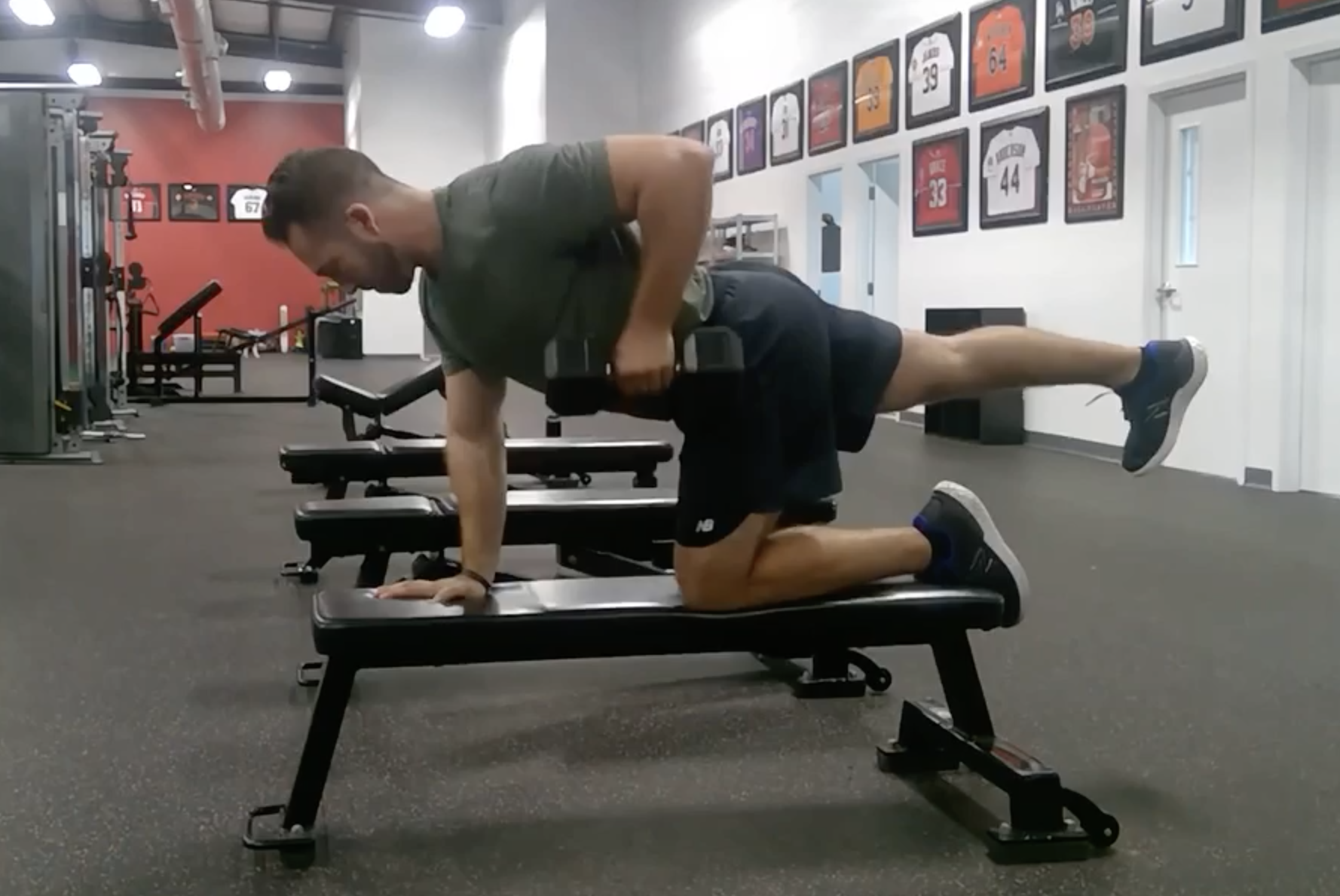
Exercise of the Week: Birddog Rows
Today’s guest post comes from Cressey Sports Performance – Florida Director of Performance, Tim Geromini, with a video assist from CSP-FL coach, Derek Kambour. Tim was one of the contributors on our Cressey Sports Performance Innovations resource, a collaborative effort of the CSP staff. It’s on sale for $75 off through Sunday at midnight; just head to www.CSPInnovations.com and enter coupon code APRIL2020.
The Dumbbell Birddog DB Row is a very humbling rowing variation and has been helpful for our clients to lock in their horizontal pulling technique. This exercise doesn’t require as much cuing from us due to the internal feedback the client gets as the set goes on, but it is important to coach the correct set-up position before the client begins the row.
Some of the benefits of the Birddog Row:
1. Core Demands: This rowing variation requires great anti-extension and anti-rotation core control. Once you get the DB off the ground it’s important to pause and establish proper core position so you don’t rock side to side. If you’re having trouble keeping technique its best to lower the weight first and see if this clean up your form.
2. Hip Extension: Adding on to the core component of the row, maintaining a neutral spine and getting quality hip extension add a unique demand no other rowing variation can offer. In clients who are naturally in lumbar extension (arching of the lower back), the contralateral aspect of this row can help separate hip extension from lumbar extension.
3. Slower, Controlled Tempo: One of the main flaws you see in horizontal pulling is excessive range of motion at the top where the shoulder dumps forward into anterior tilt (over-rowing). To perform this exercise well, you have to slow down the rowing portion which gives great sensory feedback leading to better technique. This will also improve scapula protraction at the bottom portion for better shoulder mechanics.
4. Better Arm Path: Because of the alignment with the bench, you naturally have to leave some space between your arm and your ribs otherwise the DB will hit the bench on the eccentric or concentric portion of the row. This self-teaching benefit eliminates keeping your arm tucked in too close to your side.
5. Improved Cervical Position: It’s very common in rowing variations to see cervical extension (head tilted up) or flexion (chin to chest) as compensation patterns mostly because there is no balance component to traditional rows. The birddog row has unique balance demands that add needed focus from the lifter. This leads to more of a neutral cervical spine position (double chin) to help improve balance.
We typically program this exercise for 3-4 sets of 6-10 reps per side.
To cover a wide variety of training and coaching concepts, I’d encourage you to check out CSP Innovations; it’s on sale for $75 off through Sunday at midnight with coupon code APRIL2020 at www.CSPInnovations.com.
About the Author
Tim Geromini is the Director of Performance at Cressey Sports Performance – Florida. Prior to joining the CSP team; Tim spent time with the Lowell Spinners (Class A Affiliate of the Boston Red Sox), Nashua Silver Knights (Futures Collegiate Baseball League), Cotuit Kettleers of (Cape Cod Baseball League), and UMass-Lowell Sports Performance. You can contact him at timgero@gmail.com and on Twitter (@timgeromini24).




